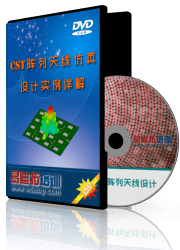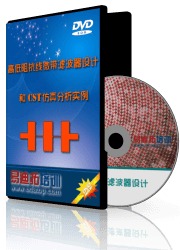- 易迪拓培训,专注于微波、射频、天线设计工程师的培养
swaped E and H plane under CST
I have a loop monopole antenna while visualizing the E and H patterns I get them swaped (E must be H and
vice versa). Any ideas about what could cause such thing!
Note: I took E plane (phi=0o) and H plane (phi=90o)
Regards!
This is not possible. Please explain a bit more about your settings
well it is a very ordinary loop planar antenna with a partial ground plane.
I have attached the results that I get.

thx!
Although it is for patch antenna, maybe it will give some insight:
https://www.edaboard.com/thread336682.html
https://www.edaboard.com/thread336592.html
well I am confused now more than I was, but one comment seems to solve the problem
by volker@muehlhaus.
what do you think?!
I did not used CST, but maybe there is a way to draw E and H planes in 3D. Or you can draw simplest possible monopole antenna and simulate it in CST, then see if things are still swapped. Just a guess: maybe E and H planes are fixed to X,Y,Z axis somehow, so things will be swapped if you draw PCB in XZ plane or XY plane or YZ plane. Another solution to see if CST have some examples on antennas, and see theirs E/H planes and orientation in XYZ space.
p.s. You can post image of your antenna in 3D view in CST, especially if there are some axis/planes drawn, so experienced CST users easily determine where they usually measure E/H patterns.
thank you !
please find attached the patterns in 3D



few things must be clarified:
1) What are theta and phi and how they related to E-plane and H-plane.
there is a nice image in this topic:
https://www.edaboard.com/thread242762.html

From this image:
H-plane, angle is phi, it is horizontal plane
E-plane, angle is theta, it is vertical plane
Come back to your image:

If CST use similar angle names for E/H plane, then
Theta horizontal -> E-plane is horizontal
Phi vertical -> H-plane is vertical
So it looks reversed to me.
On the first image E-plane is vertical, and on your image it looks like E-plane is considered horizontal
2)We must know where E-plane and H-plane must be on your antenna
as on volker@muehlhaus for patch-images:
E-field and H-field vectors:


if feeding port is on the right, then E-plane is horizontal. But usually feeding port is considered vertical (at the bottom), then E-plane would be vertical.
So i think we are pretty near to understand how swapping is occurred. The only thing left is to clarify how your antenna looks like (it is not clear from image), to understand where real E-plane is, and is it in horizontal position. If your antenna"s E-plane is vertical, then result probably swapped, because in 3D view E-plane considered horizontal.
Problem arises from the fact that CAD software does not automatically determine antenna polarization (i guess so).
p.s. in volker@muehlhaus patch images there are E-field and H-field vectors. Probably CST can do it. But it is also can be deducted from knowledge on your antenna configuration.
thank you very much!
I feel like confused about the figures of volker they don't tell much to me

Ps: could you please specify the planes by xy and yz the terms horizontal and vertical depends on the structure positioning.
thx!
What is polarization of this antenna? I guess it have vertical polarization.
I think that on your images phi is angle through XY plane, which gives H-plane pattern.
And theta is angle through XZ plane, which gives E-plane pattern.
If i am correct, all you need is to put your antenna substrate in YZ plane like this:

but i am not sure. There must be some convention about E/H-planes and phi/theta angles in CST, or some configuration.
申明:网友回复良莠不齐,仅供参考。如需专业解答,请学习易迪拓培训专家讲授的CST视频培训教程。
上一篇:CST : Frequency Solver Error
下一篇:cst left handed material












 沪公网安备 31011202014168号
沪公网安备 31011202014168号
 1427313829
1427313829 旺旺在线
旺旺在线 Skype Online
Skype Online 13761612886
13761612886 官方淘宝店
官方淘宝店
